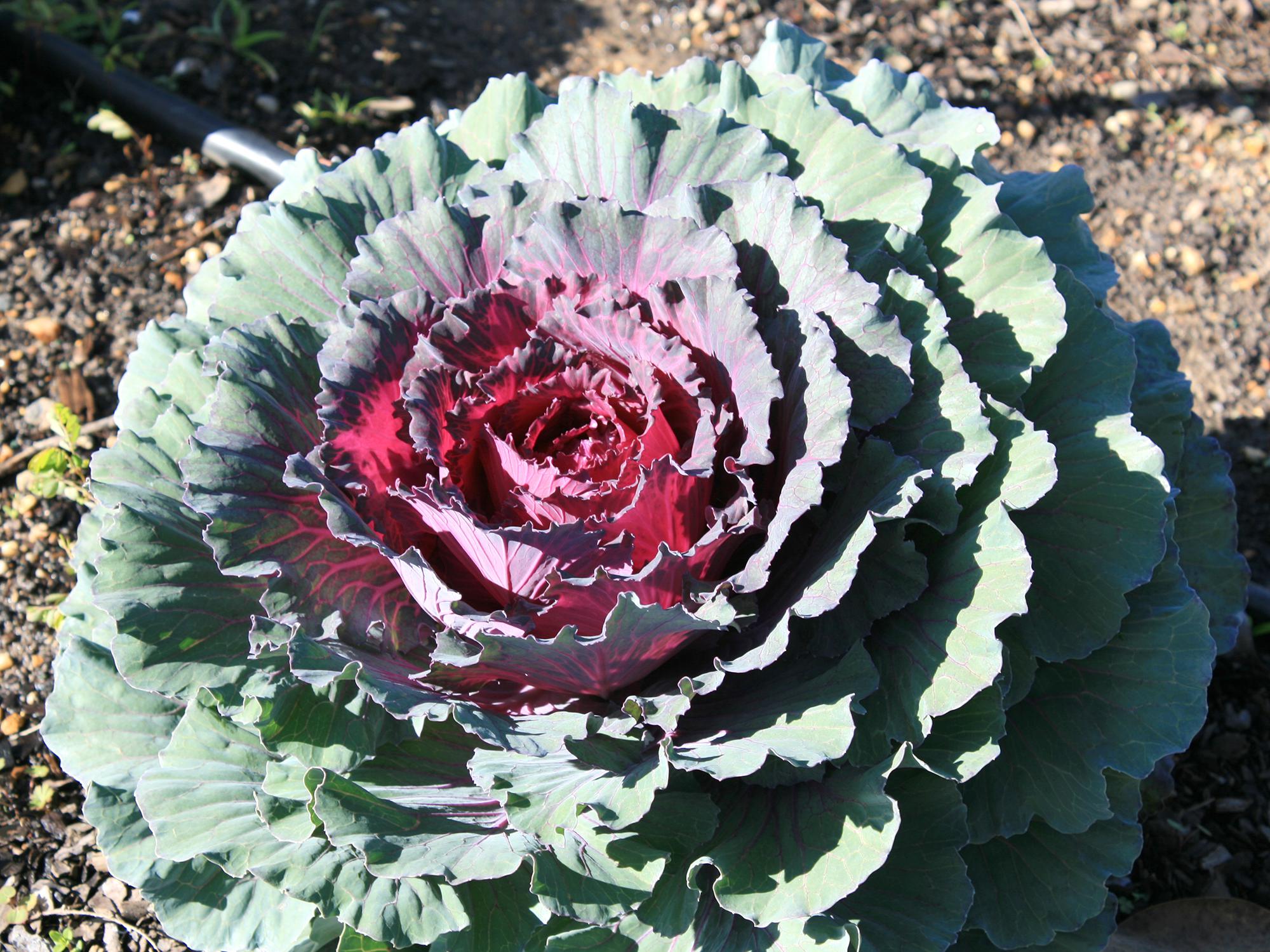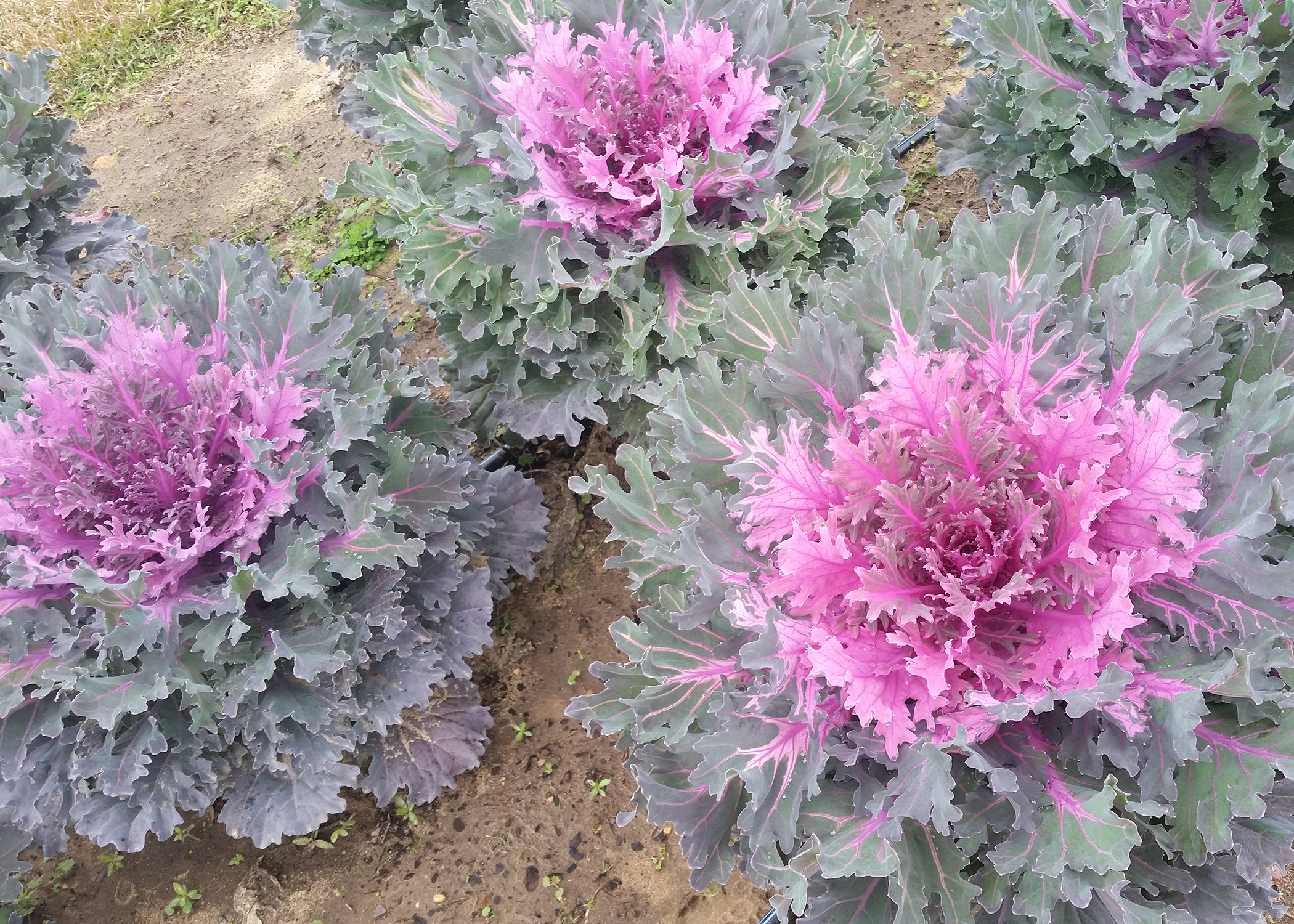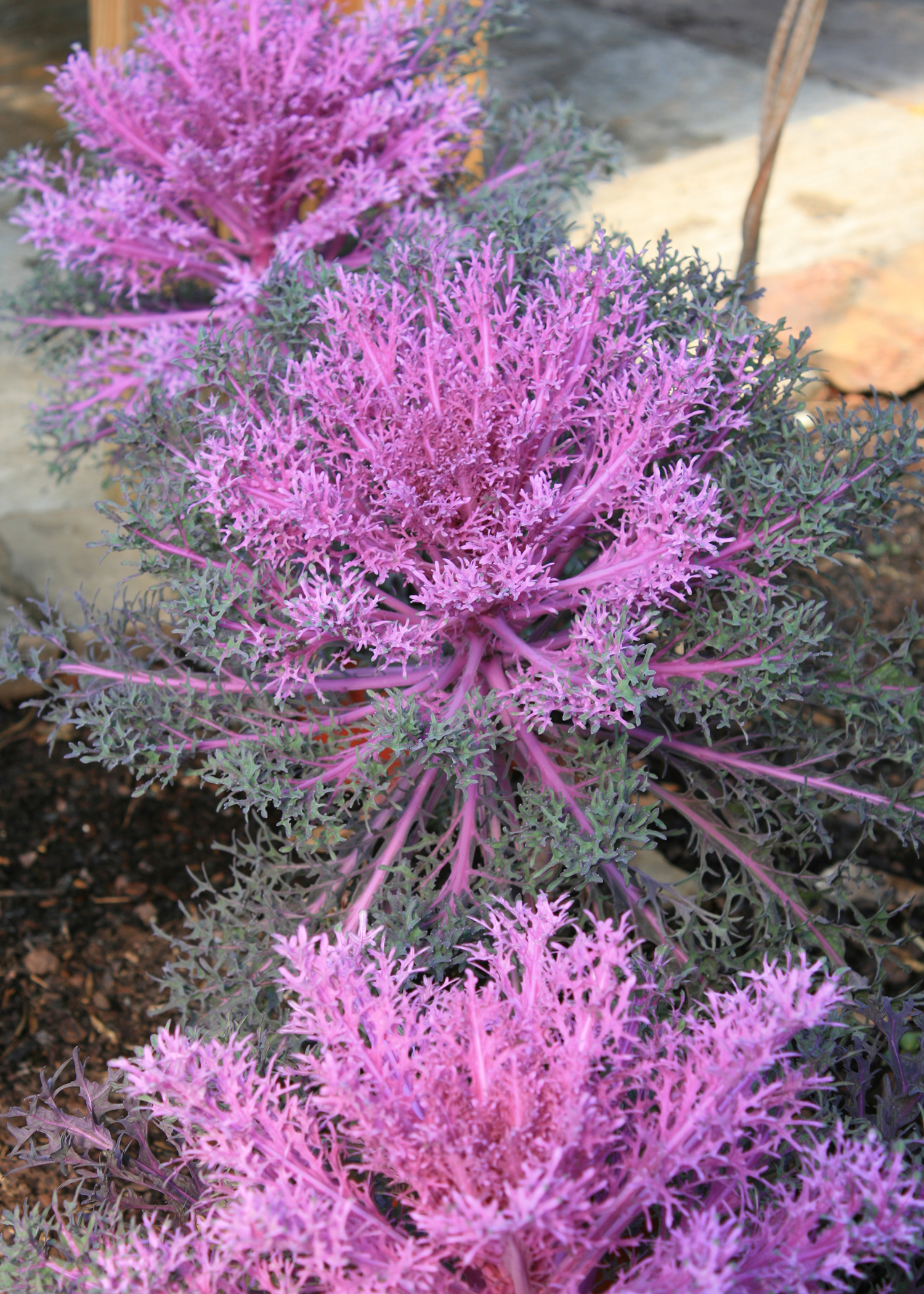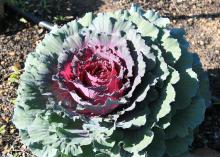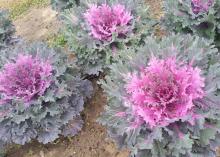Information Possibly Outdated
The information presented on this page was originally released on December 12, 2016. It may not be outdated, but please search our site for more current information. If you plan to quote or reference this information in a publication, please check with the Extension specialist or author before proceeding.
Ornamental cabbage, kale show winter color
Ornamental kale and cabbage are in a group of my favorite plants for the winter landscape, and I find them to be among the most reliable, as well. They are really easy to grow, and now that we’re getting cooler weather -- as in frost -- kale and cabbage are starting to show some great color.
Garden centers often lump ornamental kale and cabbage together, and it is true that they are the same species. However, there are a few differences that I think should be considered.
Ornamental cabbage usually refers to selections that have smooth and more or less unruffled leaves. Kale, on the other hand, has ruffled, textured leaves and many have feathered leaf edges. This characteristic, in my opinion, makes ornamental kale much more interesting and cabbage more stabilizing in the winter landscape.
There are many different colors and leaf textures to add landscape interest, so don’t plant a single type. Mix and match for increased visual interest.
But while I plant the various colors available, I really love the red selections. An old favorite in years past has been Redbor kale, but in recent years, there has been a seed shortage, and Redbor is hard to find. Don’t despair; there are other great selections to choose from.
Peacock Red kale lives up to its namesake. The foliage is displayed in beautiful sprays in shades of rose-red centers with green outer leaves. This plant has been a must have in my landscape the last couple of years.
A newer kale I’ve been observing in our Mississippi State University trial gardens is Coral Queen. This is a robust kale featuring leaves that are deeply notched and feathery. The foliage has a bright-red center with purplish-green edges.
Ornamental cabbage has a more uniform look compared to kale.
Pigeon Purple forms round semisolid heads, and the outer leaves maintain a darker green with purplish veins. As the season progresses, the new center leaves emerge with the purplish-red color. The Pigeon series also has white and pink selections.
Everyone knows about droughty weather in the hot summer season, but it can happen in the winter, too. Home gardeners should look out for drought conditions in the winter months.
Cold fronts moving through the area can be relatively dry, allowing soil moisture to deplete rapidly. Kale and cabbage like consistent moisture, so apply a layer of the mulch to help conserve soil moisture.
Don’t forget that cabbage and kale don’t like “wet feet,” so good bed drainage is essential. Some of the best growth and performance I get is by planting kale and cabbage in commercially produced, self-watering containers, which, in case you forgot, are my favorite home-growing systems.
Ornamental cabbage and kale are fairly heavy feeders. I like to add a tablespoon of a good slow-release fertilizer into each planting hole to get the plants off to a great start. On a monthly schedule, I like to use water-soluble fertilizer to keep the plants healthy and growing strong.

